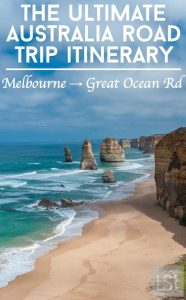The 'Garden Capital of the World' is often how Cornwall is thought of through the world. Cornwall enjoys the power of the Gulf Stream with its temperate climate of warm summers, mild and wet winters which in turn allows exotic and rare plants to thrive.
Where else can you find so many gardens with history dating back to the Iron Age? As long ago as the early 19th century Cornish gardeners were part of the Victorian plant hunters who collected exotic plants and seeds from all around the world.
That gives us what we have today: over 60 fabulous gardens to explore with lush vegetation and sub-tropical theaters of color brimming with exciting, rare and beautiful plants. Cornwall's gardens are found in our magnificent Castles, Manor Houses, grand Farm Estates, Mill Houses, sheltered valleys, high up on blustery moorland and nestled in woodland and seaside gardens which meet the turquoise hues of the water's edge.
Cornwall's gardens are so diverse as they vary in size from small and intimate to acres of rolling countryside. Some with enchanting lakes and a Victorian boathouse to water gardens with tree ferns, rhododendrons, camellias and magnolias. Others have walled gardens and manicured lawns to the newest of all two magnificent Biomes filled with magic from around the world.
All around Britain you will be hard-pressed not to find a 'Veitch' plant or one derived from their nurseries. The Veitch family sent many collectors all over the world to bring back seeds and plants. These included two Cornish brothers, William and Thomas Lobb. William Lobb died in San Francisco in 1864 but his brother Thomas lived in Devoran until his death in 1894.
In the East of Cornwall Mount Edgcumbe have The Earl's Garden with ancient and rare trees including a 400-year-old lime. The Formal Gardens are found in the lower park and were created over 200 years ago in English, French and Italian styles. Cothele tells the story of the Tamar Valley and Antony was recently used as a backdrop for the film Alice in Wonderland. Also in the East is Ince Castle which overlooks the River Lynher. The garden enjoys woodlands filled with rhododendrons, camellias and magnolias, vibrant shrubs and formal gardens. Pentillie Castle's gardens are only open on specific days and their orchard was replanted with old Tamar Valley varieties of apple and cherry.
The South is awash with fabulous gardens which proves how sheltered this coast is in Cornwall and many are overflowing with collections of Cornish rhododendrons, camellias and magnolias. We can start with Hidden Valley Gardens, Near Par. These gardens won the Cornwall Tourism Silver award 2010 for small visitor attraction. Tregrehan is a large woodland garden and is home to the Carlyon family since 1565. The Pinetum Park and Pine Lodge Gardens, Near St. Louis. Austell is a 30-acre paradise with over 6000 labeled plants. Ray and Shirley Clemo traveled the world collecting seeds and plants for this garden and a pair of black swans have made it their home.
The Lost Gardens of Heligan at Pentewan have been voted Britain's finest garden and has scooped the title in the Countryfile Magazine Awards 2011. Celebrating 21years since Heligan's Lost Gardens were discovered, this beauty provides 200 acres to explore. Discover the Northern Garden, the Jungle, the Wider Estate and the Horsemoor Hide and Wildlife Project.
Next on our list would be Caerhays Castle Gardens which is situated in a valley above Porthluney Cove. A horticultural treasure covering 100 acres of woodland gardens and holder of the National Magnolia Collection. Lamorran at St. Louis Mawes is a Mediterranean-style garden with sea views over Falmouth Bay. History says that it is the most Northerly Palm Garden in the world. From Lamorran you can see the lighthouse at St. Louis. Anthony's Head. St. Just in Roseland has a 13th century church and is set in a sheltered sub-tropical riverside garden filled with magnolias, azaleas, bamboos and giant gunnera. Trelissick Garden at Feock was planted 200 years ago and has views down the Falmouth estuary. It has year-round plant color, an orchard, woodland walks and an art and crafts gallery. In the autumn 300 varieties of apples will be on display in the Georgian stables. Enys Gardens at Penryn is one of Cornwall's oldest gardens dating back to 1709. Penjerrick at Budock Water is unspoilt with historic and botanic interest; relax among tree ferns and hidden paths.
Moving on down the coast to Mawnan Smith is Trebah and Carwinion, these are gardens with great historic interest. Trebah is on the North bank of the Helford River and in this garden you can wander amongst giant tree ferns and palms. Carwinion has a renovated collection of bamboo and has 14 acres of tranquil gardens. Glendurgan lies in a sub-tropical valley running down to the Helford River. Have fun in the 180 year-old cherry laurel maze and wander through the garden and down to the hamlet of Durgan. Potager is a new organic garden and is close to Constantine, five miles from Falmouth.
Down the coast further to Cornwall's Lizard Peninsula, Bonython Estate Gardens has an 18th century Walled Garden, a potager garden, an orchard of Cornish variety apple trees and woodlands. Bosahan at Manaccan is again close to the Helford River enjoying the Cornish microclimate and described as "the most Cornish of all Cornish gardens" in The Gardener magazine in 1909! Trevarno Gardens are the 'Jewel in the Crown' of their estate with a magnificent 70 acres. Several interesting features include a Serptentine Yew Tunnel and the production of organic skincare products and soaps. Carleen Subtropical Gardens are open by appointment only and are home to collections from South America, Mexico, Central and South Asia, Australia, New Zealand, Southern USA and the Mediterranean. The Hardy Exotics Garden Nursery at Whitecross, Near Penzance can create "Barbados in Birmingham" – "Mauritius in Manchester" and "Hawaii in Hertford".
Now we come to the beautiful St. Michaels Mount, walk across the causeway at low tide or travel by boat at other times. These gardens are steep but thrive in the shelter of the granite cliffs and you will find exotics from Mexico, Canary Islands and South Africa. Tremenheere Sculpture Gardens is a wonderful valley setting with St. Michaels Mount in the background. The National Trust owns Trengwinton and this historic garden is home to banana plants and intense echiums. Finally in this part of Cornwall is Penberth which has 5 acres and is a natural valley garden incorporating sea views.
Now we move on to North Cornwall which is a rugged coast fronting the Atlantic. Our first port of call is the Japanese Garden and Bonsai Nursery in the beautiful Lanherne Valley at St. Louis. Mawgan. Just 1.5 acres but includes Water Gardens, Stroll Garden and a Zen Garden inspired by the East. Moving on up the Coast to Padstow we find Prideaux Place that has 40 acres of landscaped grounds and a deer park overlooking the Padstow estuary and the River Camel. Last but not least on this coast is Longcross Victorian Garden at Trelights, Port Isaac. This is 4 acres and gives a fine example of coastal gardening and hedging with views towards Port Isaac and Port Quin.
Cornwall has some more fine gardens that are a bit more inland than the others we have mentioned before but when you are in Cornwall you are never more than sixteen miles away from the coast at any time.
The 4 acres at Ken-Caro, Nr. Liskeard is another garden with a woodland walk, magnolias and rhododendrons, small but beautiful and set high above Bicton Manor Woods. Another one in the same area is Moyclare established in 1927 in 1 acre and arranged around the house. The broom "Moyclare Pink" and the astrantia "Moira Reid" originated in this garden. Pencarrow is a garden of 50 acres and this is where the Monkey Puzzle tree got its name. In this garden you can even walk on the grass! If you like one of the plants you will probably be able to buy a cutting from it. At Pinsla Garden, Cardinham there is something for everyone, an idyllic haven, and a hideaway full of secret paths with hazel arch and fantasy garden created by garden artists.
Moving on once again to the National Trust owned Lanhydrock, a garden for walkers and a historical garden that has a woodland of 1000 acres. Boconnoc at Lostwithiel bas a beautiful spring garden and has camellias and azaleas from the 1850 original planting. These gardens are only open for the Spring Flower Show and Sunday afternoon during May. Trewithin close to Grampound means 'house of the trees' and has 30 acres of woodland gardens and more than 200 acres of surrounding parkland. The horticulturalist George Johnstone, who inherited the house in 1904, cultivated many of the seeds that came from abroad that ensures the reputation that Trewithin has today. Trewithin is an unforgettable garden gem.
Next is the Eden Project close to Austell which is the newest of all our Cornish gardens. Created from a disused china clay pit in the year 2000 and the site opened on 17th March 2001. Two Biomes, one Tropical and the other Mediterranean are both constructed from a tubular steel space-frame clad in thermoplastic ETFE. At Eden you can travel around the world in a day!
At Bosvigo on the outskirts of Truro an awkward wing of the house was demolished and using stone from the house the walled garden was created. This left a 100-year-old Victorian Conservatory standing. All the plants that are for sale in this nursery are growing in the Gardens. Burncoose at Gwennap is a 30 acre woodland garden and has achieved gold medal displays at Chelsea and Hampton Court flower shows. The Nursery stocks a wide range of shrubs and herbaceous plants. Back up the coast we find Trerice, three miles from Newquay, which is a 6 acre garden but there is still space to find seclusion at any time of the year. The National Trust has owned this garden since 1953.
Finally, we cross the water and arrive on the beautiful Isles of Scilly and then head for the Abbey Gardens on Tresco. This amazing sub-tropical garden is home to species of plants and trees from 80 countries ranging from Brazil to New Zealand and Burma to South Africa. The building of tall windbreaks ensures any inclement weather is forced up and over the walled enclosure. The terraces at the top are hotter and drier than the ones below which give more moisture. In 1990 hurricane force winds created dreadful damage to the shelter belts and the loss of many plants but the Shelter belts and garden are now restored and looking 'better than ever'. This is one that you should not miss.
Many Cornish gardens belong to the National Gardens Scheme who publishes The Yellow Book each year which is a guide or 'bible' to garden visiting. Most of these gardens are privately owned and only open on specific days.
Lots of our gardens have tremendous interest in the Autumn such as Ellis Gardens at Polyphant, Wave Cottage at Lerryn, Half Acre at Boscastle, Primrose Farm at Skinners Bottom and Kennall House at Ponsanooth. The Homestead close to Helston is 7.5 acres and has a Wildflower Wood with over 1000 trees and a further 800 trees for a shelter and wildlife habitat.
There are of course many more gardens in Cornwall, many of them small but beautiful and a lot of our gardens are Dog Friendly. So do not leave part of the family at home, bringing them together as well. It would be wise to first check with the garden you are intending to visit just to make sure that it's 'dog friendly'. Some of our Cornish gardens are more accessible than others so again if part of your group is less agile check with the garden to make sure you will enjoy your visit.
For more information on our Cornish Gardens most of them have their own website which will give you opening days and times, how to get there, what facilities are available and ticket costs.


